
| The Greek islands | Naxos HOME | Naxos Hotels | Naxos Beaches | Naxos History | Naxos Sights | Naxos Travel |
| Naxos Chora | Naxos Restaurants | Movies of Naxos island | Movies of Naxos Beaches |





|
Google Chrome thinks enlarging my pictures, some links and sometimes scrolling through the pages is a popup. If you want to navigate my website than please allow "popups". |
| The capitol of the island of Naxos in Greece - Naxos Town or Naxos Chora |
 |
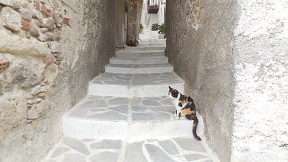 |
 |
 |
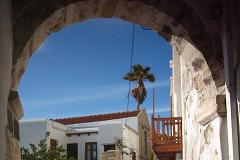 |
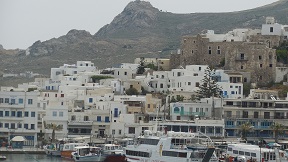 |
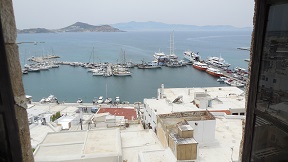 |
 |
 |
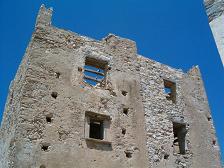 |
|
The main town of Naxos is a bit bigger than most towns on other islands, but it is very attractive. There is a Venetian castle (that is still lived in) at the top of the hill dominating the village, and there are cute narrow streets with tourist shops. At the north side of the village there is an island connected by a path to Naxos Town, and on it there is an ancient gate of an old temple. In and around the harbour you find many shops, restaurants, coffee shops and bars, and there is a long boulevard looking out over the neighbouring island of Paros. We think that the people on the island are very friendly and polite, and that they have a good sense of humour. The official name of the capital is Naxos (-town), but is often referred to (as on other islands) as Chora. It is the home of the Greek orthodox bishop and a Roman Catholic archbishop. Naxos is one of the most popular Greek islands with island hoppers. A large number of people visit it and the average length of stay is also greater than that for other popular Greek island destinations. This is due to the combination of an attractive island port, many beautiful large and easy accessible sandy beaches with sand dunes, and a fertile and green interior with old villages and old ruins. Naxos also has good ferry connections and is often the starting point for people that want to travel to Amorgos or to one or more of the islands of the small Cyclades (Koufonissia, Schinoussa, Iraklia and Donoussa). The opening of the airport on the island also brought quite a few tourists to Naxos. The airport is situated at a mere 1 kilometre distance from the Chora, or five minutes by car. Most of the tourists stay concentrated around Naxos Chora and the direct surroundings though and other parts of the island are much more quiet. Naxos Town or Naxos Chora is the arrival point for the ferry visitors. It has a nice waterfront with terraces, taverna's and shops and behind that there are winding and often steep little streets with small white houses. On top of the Chora is the Venetian castle or Kastro. Most people stay in Naxos Town during their stay or somewhere closeby and than visit the nearby miles of sandy beaches during the daytime. If you want to take a look at the map of Naxos Chora than please click here. |
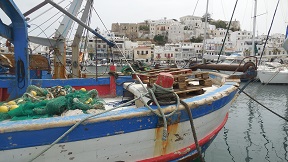 |
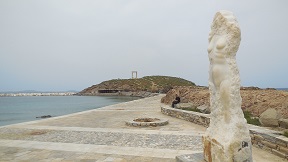 |
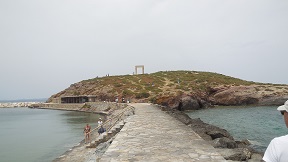 |
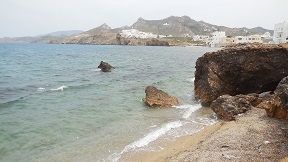 |
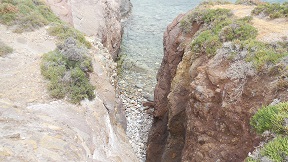 |
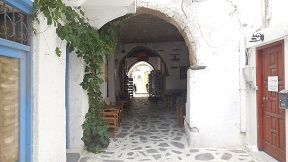 |
 |
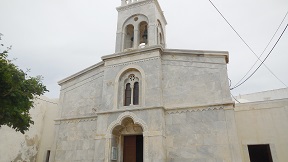 |
 |
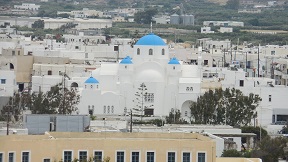 |
|
You can easily spend an entire day strolling through the capital of Naxos Chora and look at the historic buildings. It is also enjoyable to sit in the harbour with a cup of coffee, a drink or with a meal (because the food on this island is excellent where-ever we were). Close to the place where the ferries come in there is a restaurant that is opened 24 hours a day and they serve a good breakfast. The town beach was still pretty busy in September, because there are quite a bit of hotels in Naxos Chora, but actually the whole coastline of Naxos is a beach. Once you get into the streets behind the boulevard and walk through the Chora you will see the old and attractive face of the town. On top of the hill lies the well preserved Venetian castle, that was build on the remains of the old acropolis (you can have a look inside as well, entrance fee 5 euro in 2014). Part of the castle is still inhabited. There is a Roman Catholic cathedral and quite a large and very interesting archaeological museum, with finds from Naxos and surrounding smaller islands (such as objects from Donoussa and Keros island). From the ancient city of Naxos is hardly anything left that can be detected nowadays. Interesting is the 6-meter-high marble Portára port on the island Palatia that dominates the harbour of Naxos Town. It dates from around 525 BC. Built as a temple entrance (of presumably for the god Apollon), it was never completed after the fall of Lygdamis. |
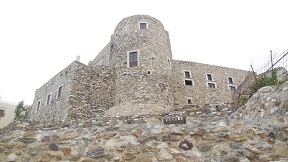 |
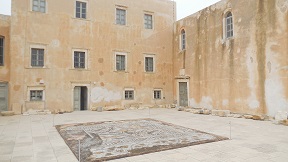 |
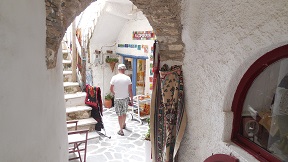 |
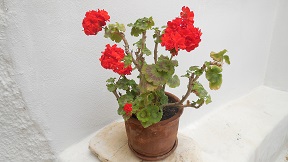 |
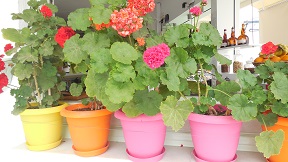 |
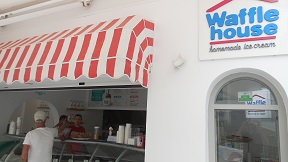 |
 |
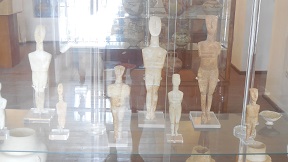 |
 |
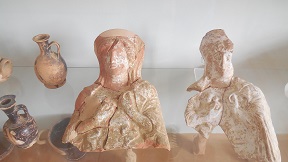 |
|
The medieval town is situated above the harbour and is further divided into the Venetian Kastro, where once the Catholic nobility lived and the Bourgo, where the indigenous Greeks lived. The 18th-century Orthodox cathedral in the Bourgo, Mitrópoli Zoödóchou Pígis (meaning the life giving source), possesses a remarkable iconostas painted by Dimítrios Válvis, a painter from the so-called School of Crete. The Kastro with another twenty imposing mansions can be seen, decorated with the coat of arms of the Venetian nobles who lived there. Members of the family of the Duke Sanudo lie buried in the 13th-century Catholic cathedral in the Kastro. In the palace of the Sanudo (in its present form from 1627) has long been a school and housed the writer Nikos Kazantzakis as the most famous pupil. Now there is the Archaeological Museum with a fine collection of marble sculptures from the Cycladic civilization. |
© Hans Huisman, https://www.angelfire.com/super2/greece/ 2018